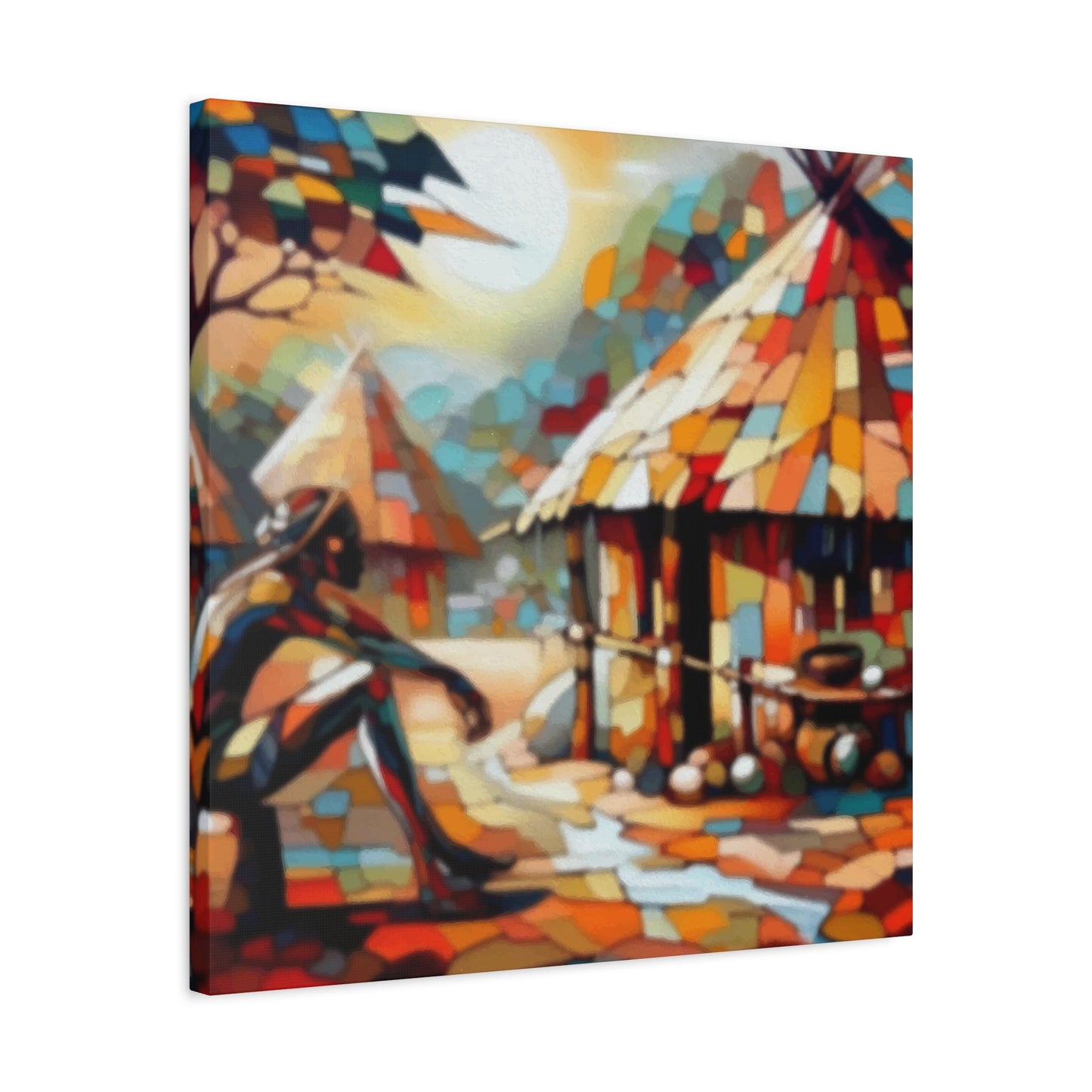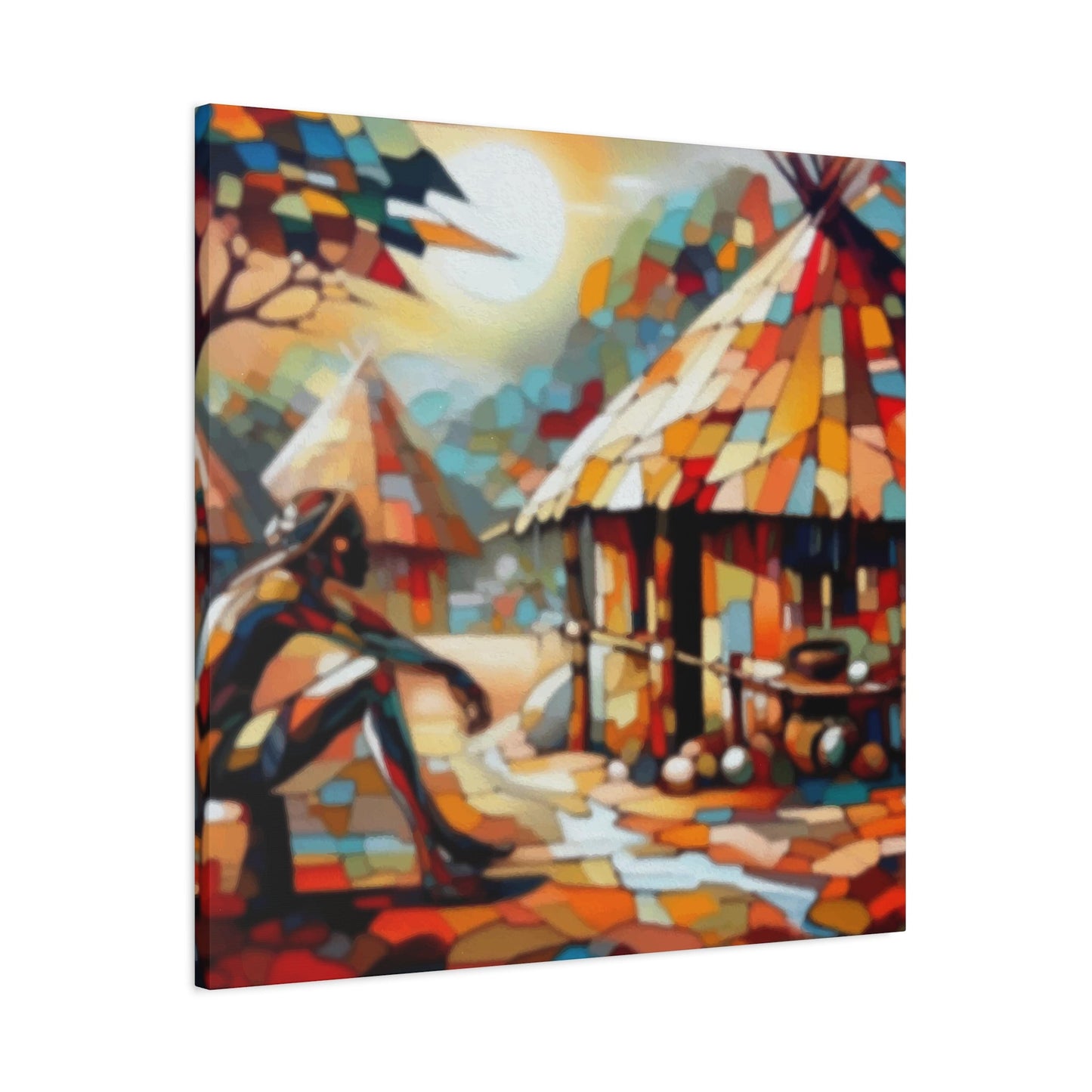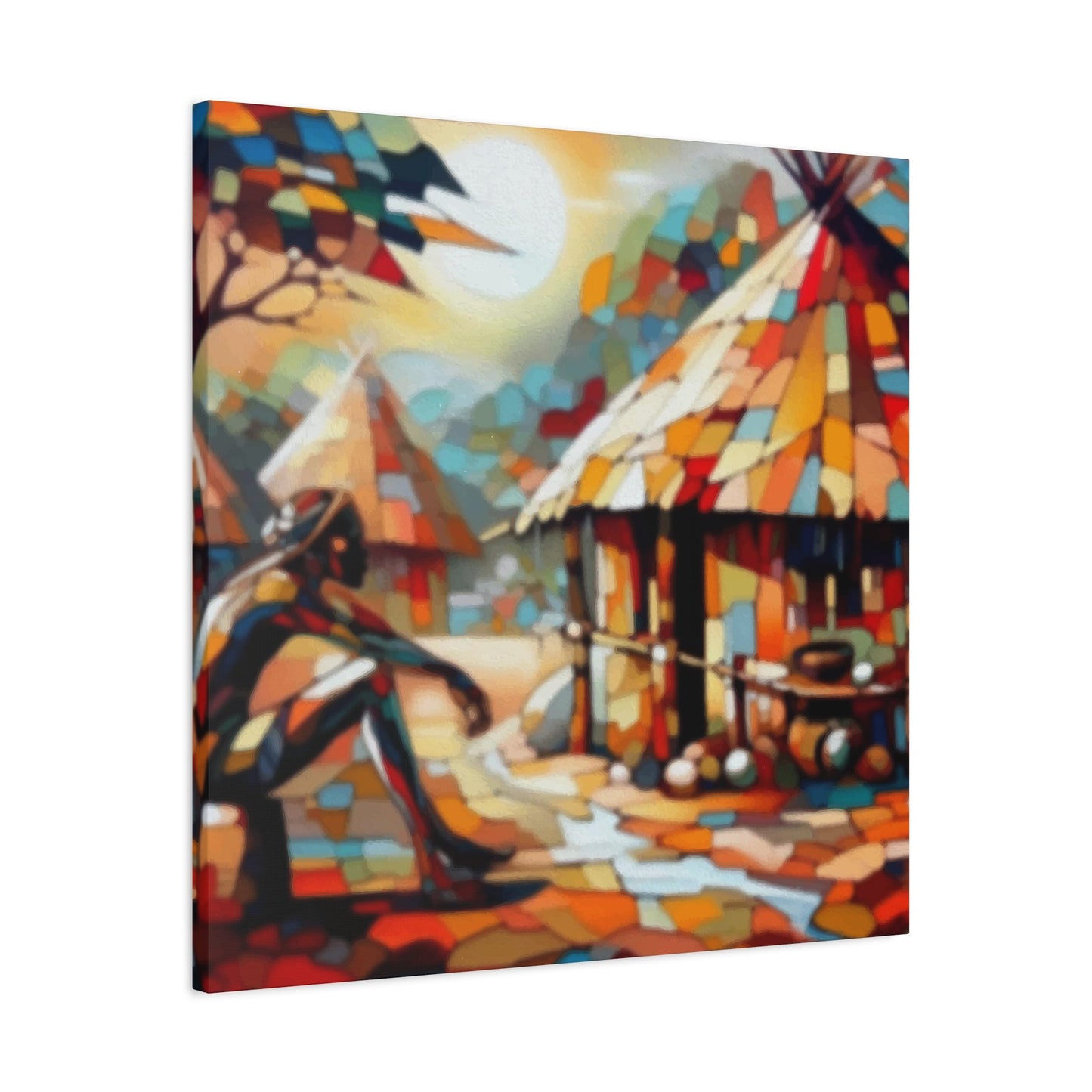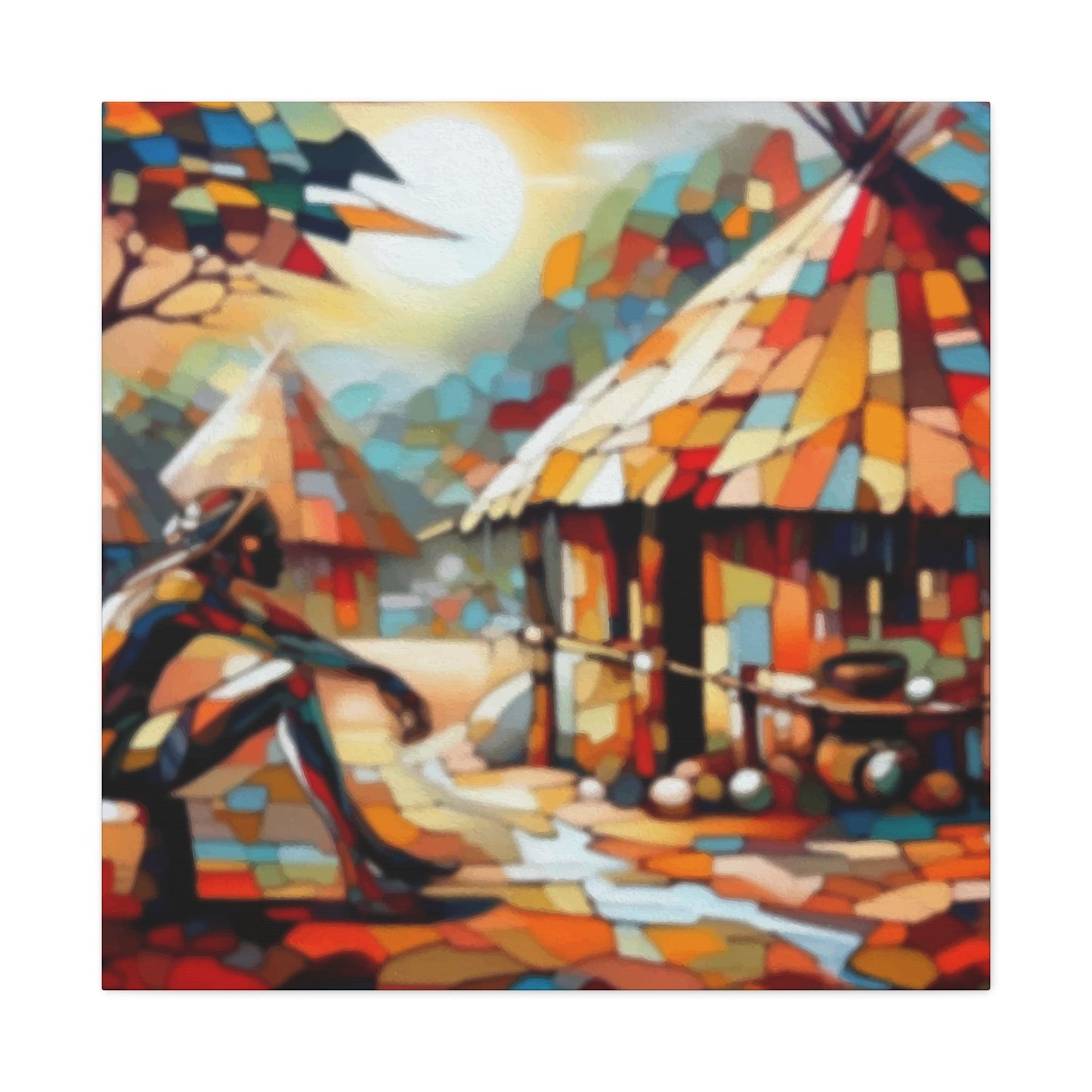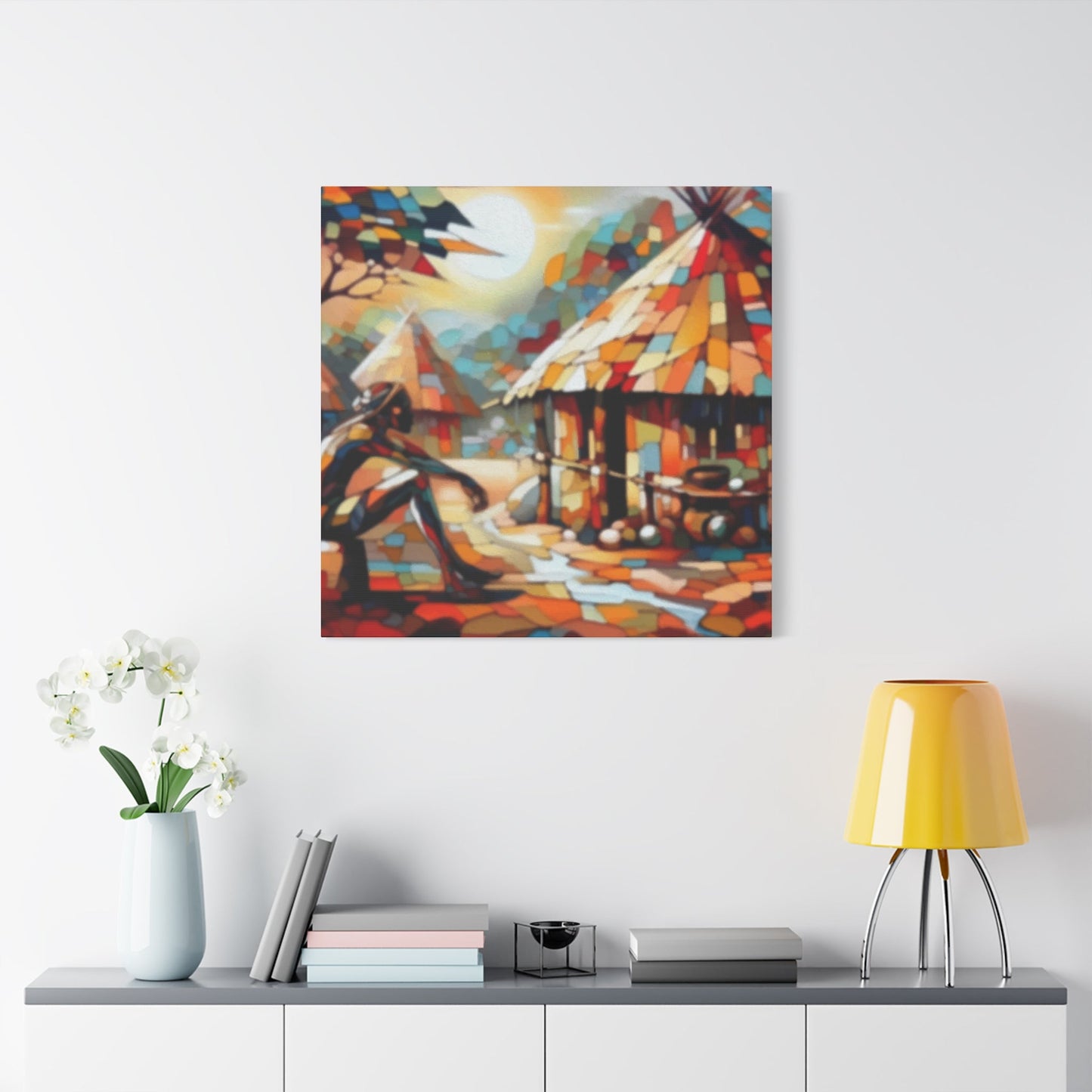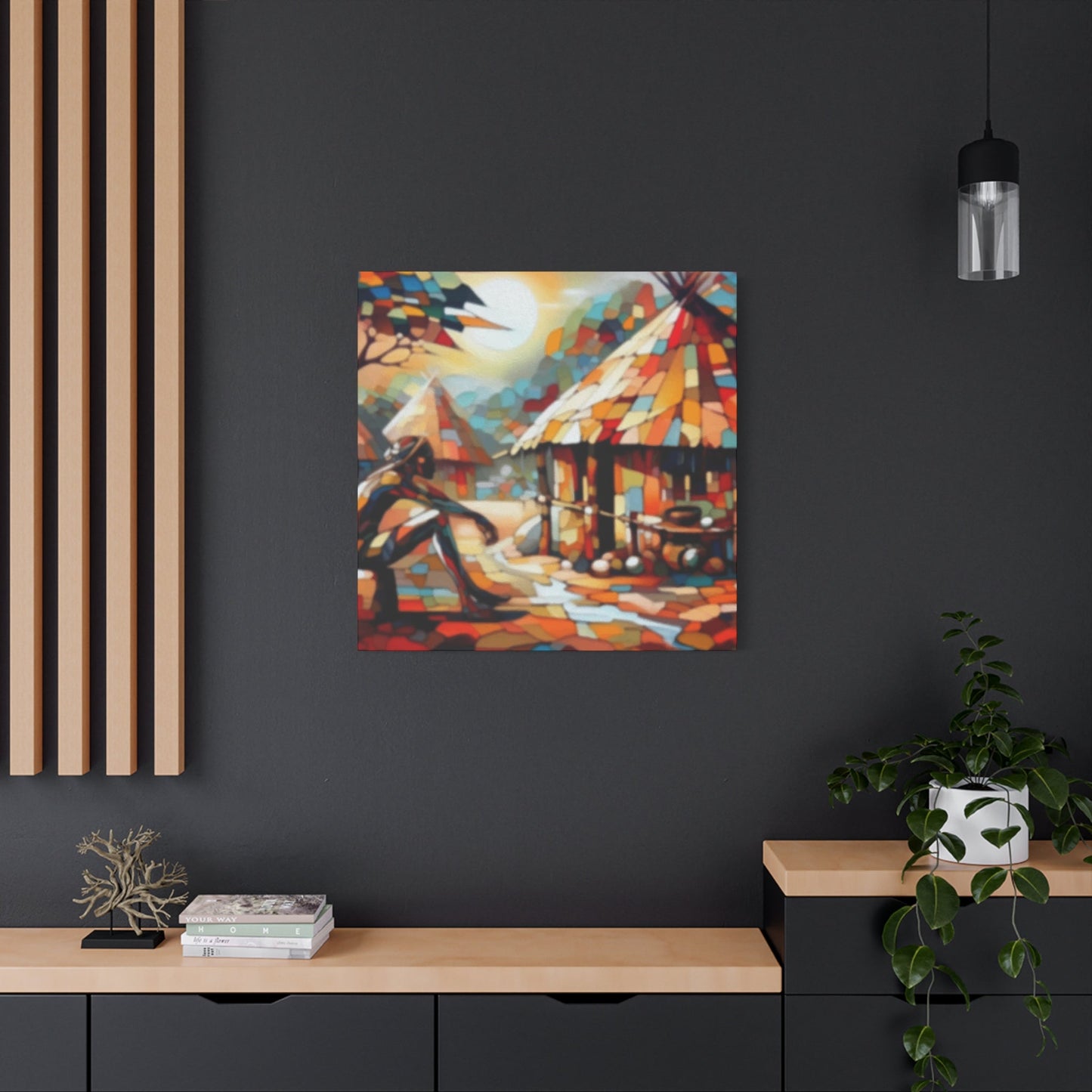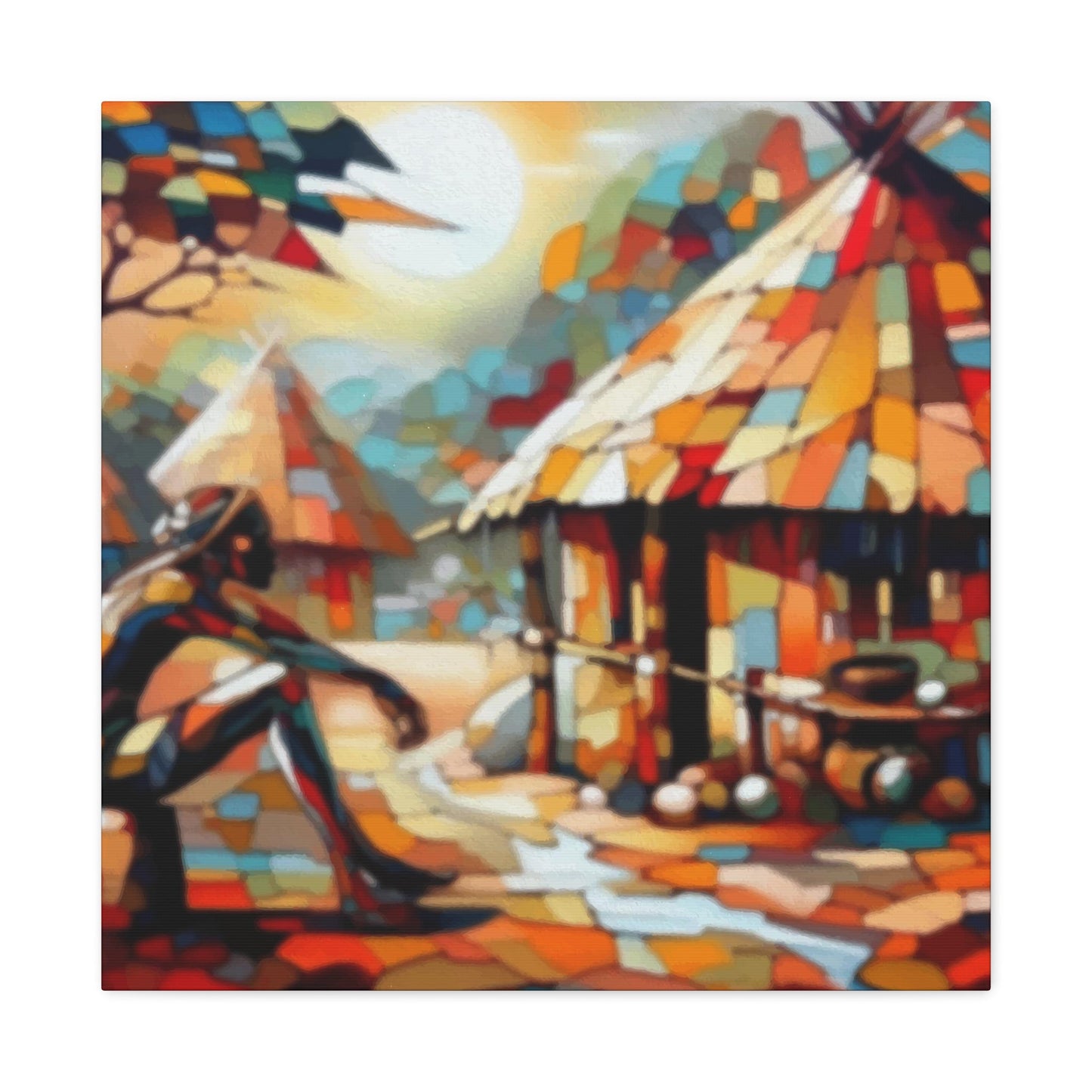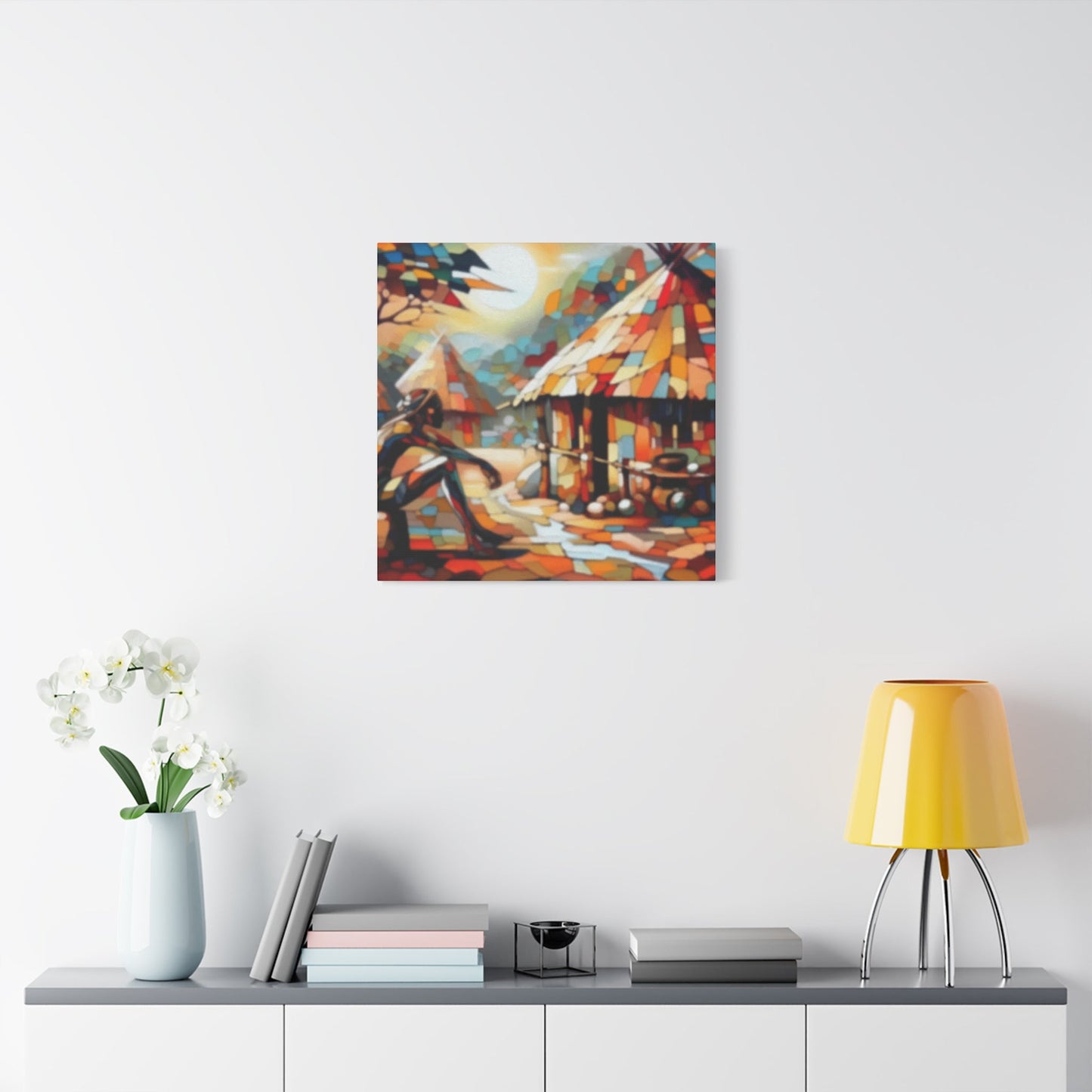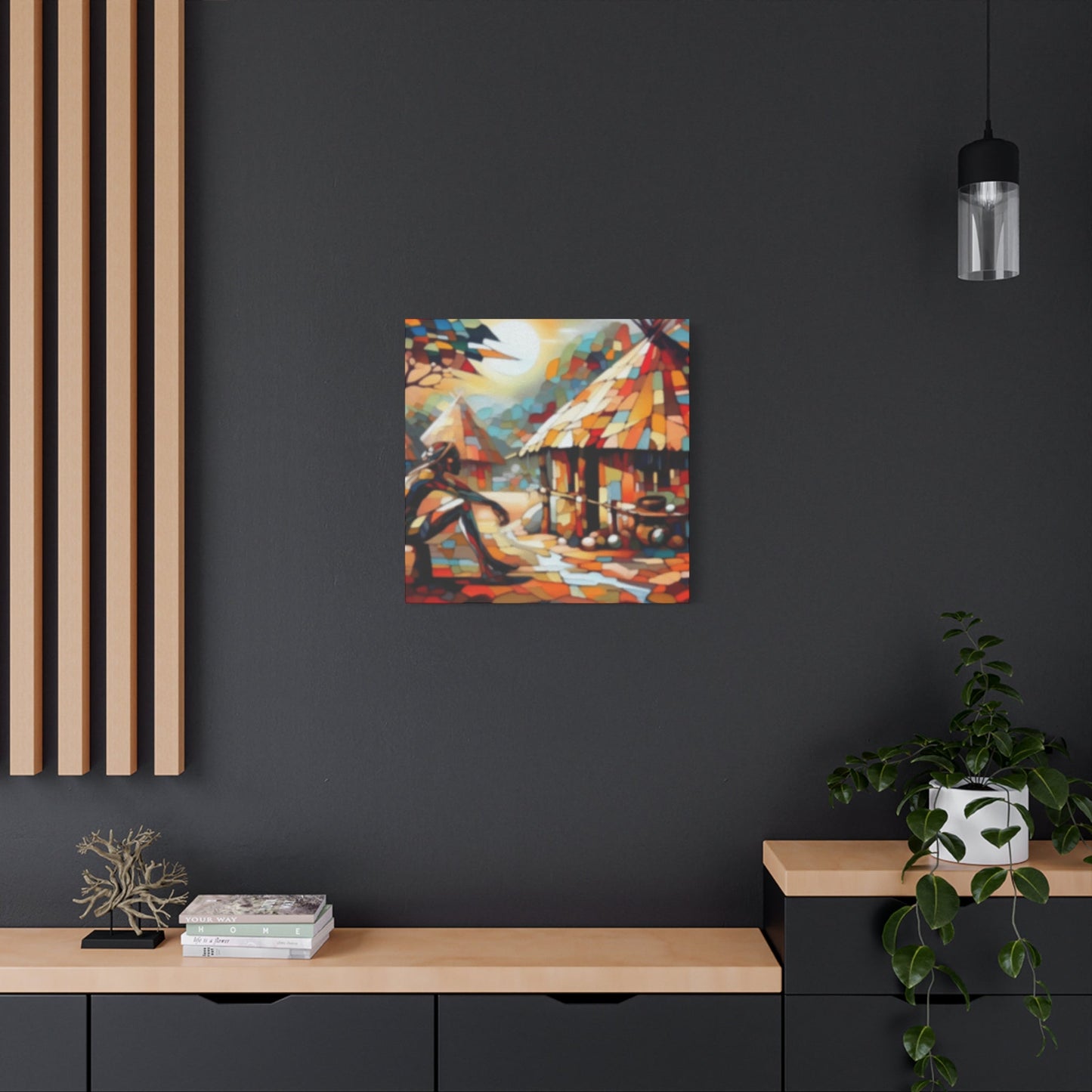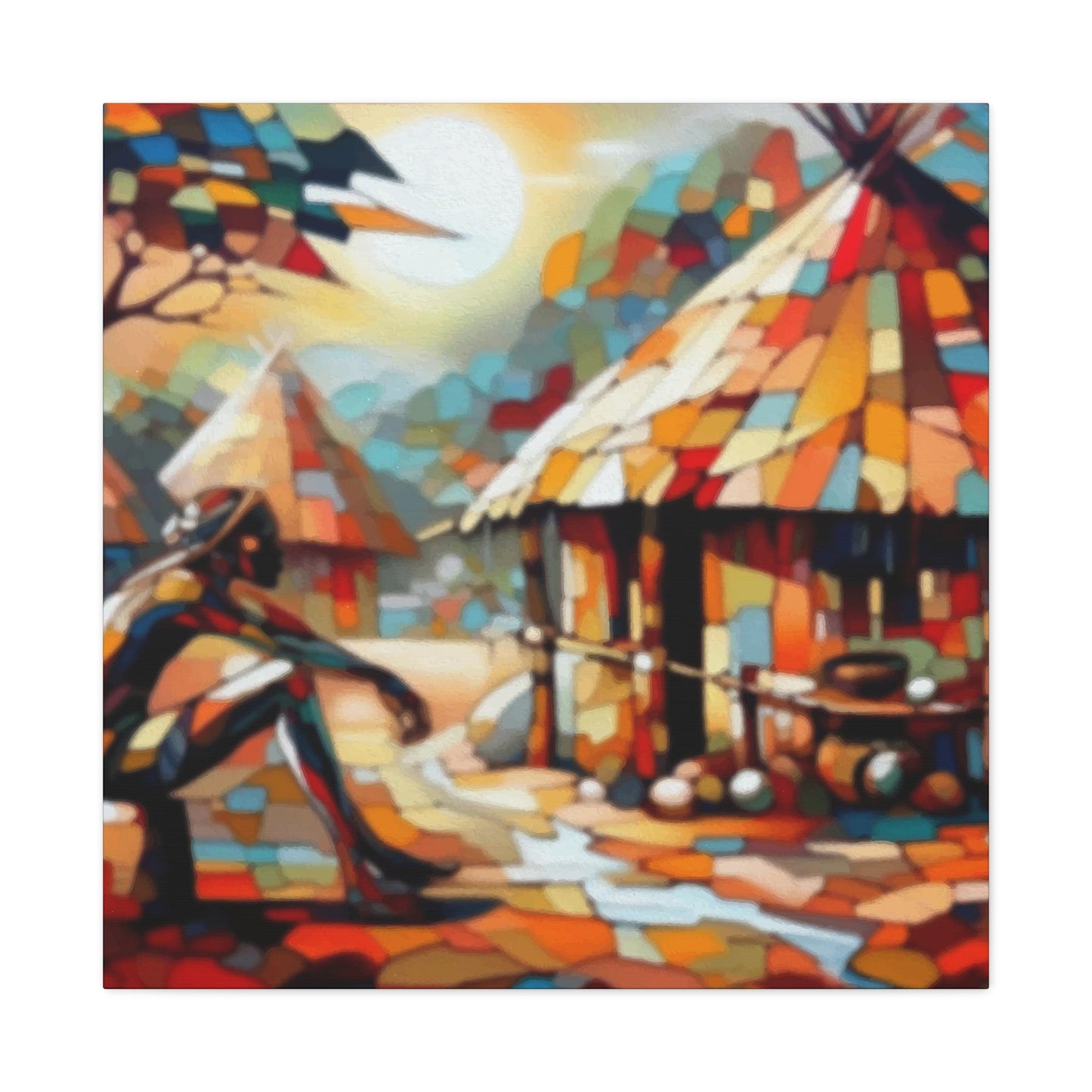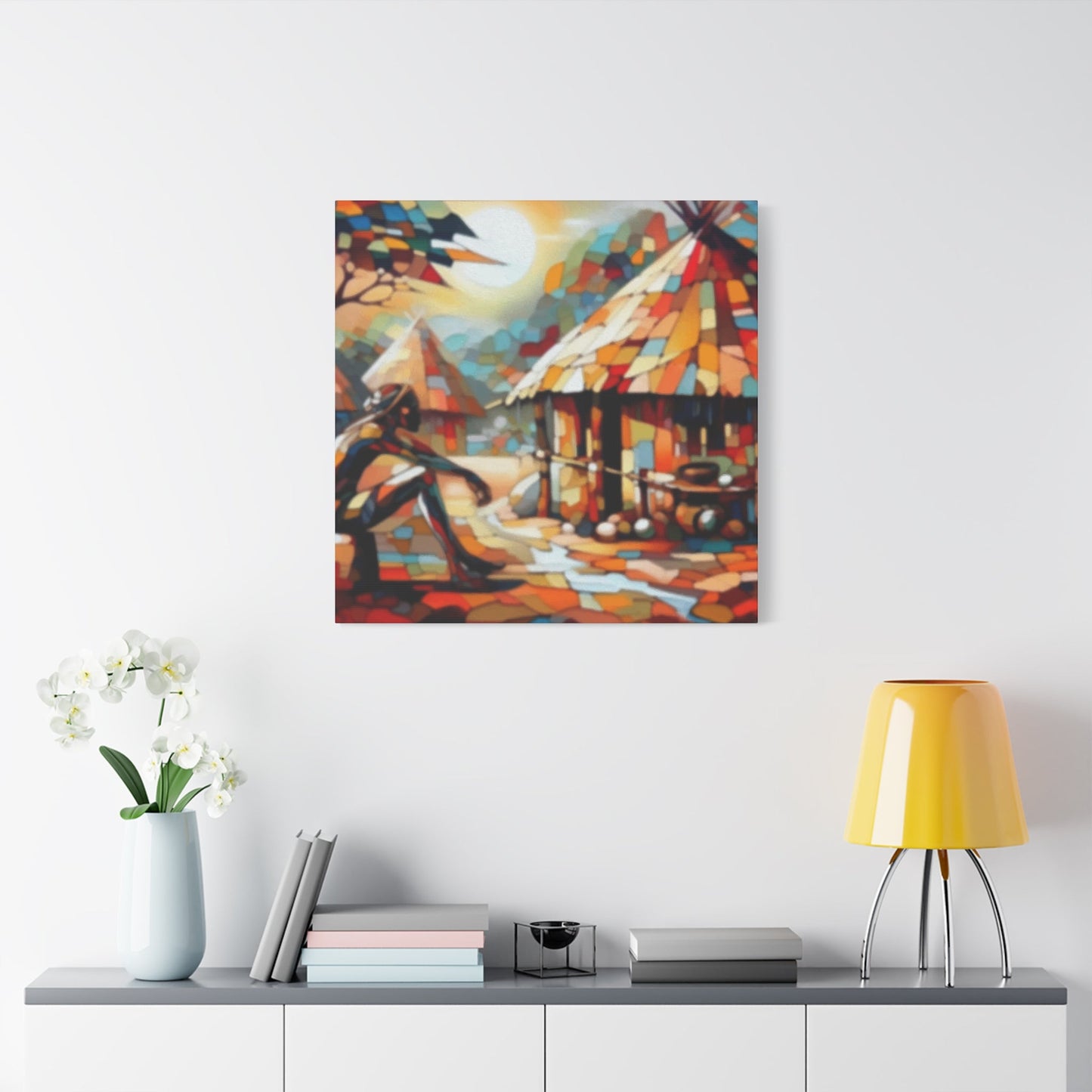Embrace Rural Charm with Village Wall Art That Evokes Peaceful Countryside Vibes
The allure of rural landscapes has captivated art enthusiasts and homeowners for centuries, offering a peaceful escape from the hustle and bustle of modern urban living. Village-themed wall art represents more than just decorative pieces; they embody tranquility, simplicity, and a connection to our roots that many people yearn for in their daily lives. These artistic representations of countryside living bring warmth, character, and a sense of belonging to any interior space, whether you reside in a bustling city apartment or a suburban home.
The appreciation for village artwork stems from our collective nostalgia for simpler times and our innate desire to reconnect with nature. When you incorporate these pieces into your home, you create visual sanctuaries that offer moments of calm reflection amidst the chaos of contemporary existence. Each brushstroke depicting a cobblestone path, every color representing a sunset over farmland, and each detail showing daily rural activities serves as a reminder of life's essential pleasures and the beauty found in uncomplicated living.
Contemporary interior design has witnessed a remarkable resurgence in the popularity of countryside-inspired artwork. Homeowners and decorators alike are increasingly drawn to pieces that showcase pastoral settings, recognizing their ability to transform sterile spaces into inviting havens. This trend reflects a broader cultural movement toward mindfulness, sustainability, and appreciation for heritage and tradition. Village wall art satisfies this longing while simultaneously serving as sophisticated design elements that complement various decorating styles from traditional to modern minimalist approaches.
Inviting Rural Comfort Through Decorative Wall Pieces
Creating an atmosphere of warmth and comfort in your living space requires careful consideration of the decorative elements you choose to display. Rural-themed artwork serves as an exceptional tool for achieving this goal, as these pieces naturally evoke feelings of safety, peace, and contentment. The soft color palettes typically found in countryside scenes, featuring earthy browns, gentle greens, warm ochres, and soothing blues, work harmoniously to create environments that feel both grounded and uplifting.
When selecting decorative pieces that showcase rural settings, consider how they will influence the overall mood of your room. A well-chosen piece depicting a tranquil hamlet nestled among rolling hills can become the focal point of your living room, drawing the eye and setting the tone for the entire space. These artworks function as visual anchors, providing stability and cohesion to your design scheme while offering endless opportunities for contemplation and appreciation.
The versatility of countryside-inspired wall decorations makes them suitable for virtually any room in your home. In bedrooms, gentle scenes of peaceful settlements promote relaxation and restful sleep. In dining areas, vibrant market scenes or harvest celebrations create a sense of abundance and community. Home offices benefit from the calming influence of pastoral views, which can reduce stress and enhance focus during work hours. Even bathrooms and hallways can be transformed with carefully selected pieces that extend the theme throughout your entire living space.
Beyond their aesthetic appeal, these decorative elements serve as conversation starters and personal statements about your values and tastes. Displaying rural-themed artwork signals an appreciation for tradition, craftsmanship, and the natural world. It demonstrates a mindful approach to home decoration that prioritizes meaning and emotional resonance over trendy, disposable design choices. Your guests will find themselves drawn into the stories these images tell, prompting discussions about heritage, travel experiences, and shared memories of simpler times.
Natural Beauty Intersects With Sentimental Memories
The intersection of natural landscapes and nostalgic sentiment creates a powerful emotional response that few other art forms can replicate. Countryside scenes tap into universal memories and experiences that transcend cultural and geographical boundaries. Whether you grew up in a rural area or simply harbor romantic notions about country living, these images speak to something fundamental in the human psyche—our connection to the land and our agricultural heritage.
Nature plays a starring role in authentic rural artwork, not merely as background scenery but as an integral character in the story being told. The changing seasons, the quality of light at different times of day, the relationship between cultivated fields and wild spaces—all these elements combine to create compositions that feel alive and dynamic. Artists who specialize in countryside subjects understand how to capture the essence of natural beauty while infusing their work with emotional depth that resonates with viewers on a profound level.
The nostalgic quality of these pieces doesn't necessarily require personal experience with rural living. Instead, they tap into a collective cultural memory and a romanticized vision of pastoral life that exists in literature, film, and popular imagination. This idealized perspective doesn't diminish the value of the artwork; rather, it enhances its appeal by offering an aspirational vision of tranquility and harmony that viewers can appreciate regardless of their personal history. The sentiment these pieces evoke serves as a form of emotional refuge, a safe harbor for our thoughts and feelings in an increasingly complicated world.
Examining the way natural elements are portrayed in rural artwork reveals much about the artist's skill and vision. The texture of tree bark, the play of sunlight through leaves, the reflection of buildings in still water, the movement of clouds across expansive skies—these details require careful observation and technical proficiency to render convincingly. When executed well, they transport viewers into the scene, allowing them to almost feel the breeze, hear the birds, and smell the fresh country air. This immersive quality separates mediocre countryside art from truly exceptional pieces that become treasured possessions.
Traditional Charm In Contemporary Home Settings
Incorporating elements with traditional rural character into modern homes presents an exciting design challenge that yields stunning results when executed thoughtfully. The key lies in understanding how to balance the rustic aesthetic with contemporary design principles, creating spaces that feel curated rather than cluttered, intentional rather than dated. Countryside artwork serves as an ideal bridge between old and new, offering timeless appeal that complements rather than conflicts with modern furnishings and architectural features.
The warmth inherent in rural-themed pieces provides a necessary counterpoint to the cool minimalism that has dominated contemporary design in recent years. While clean lines and neutral palettes create visual calm, they can sometimes feel sterile or unwelcoming without the addition of warmer elements. Artwork depicting cozy hamlets with smoke rising from chimneys, farmers tending their fields, or villagers gathering in town squares introduces human warmth and narrative interest that makes spaces feel lived-in and loved.
Color selection plays a crucial role in successfully integrating traditional rural imagery into modern interiors. Many contemporary homes feature neutral backgrounds—whites, grays, and beiges—that provide the perfect canvas for artwork with richer, more saturated colors. A piece featuring the golden hues of autumn harvest scenes or the lush greens of summer pastures creates a striking focal point without overwhelming the space. Alternatively, some modern homeowners prefer artwork rendered in more subdued, monochromatic palettes that maintain the rural subject matter while adhering to a more restrained color scheme.
The framing and presentation of countryside artwork also impacts how well it integrates into contemporary settings. While ornate gilt frames might suit traditional interiors, modern spaces often benefit from simpler frame selections that allow the artwork itself to take center stage. Floating frames, gallery wraps, or even frameless mounting options can give traditional subject matter a fresh, updated appearance that feels appropriate in contemporary contexts. This approach respects the integrity of the artwork while acknowledging the aesthetic preferences of modern design sensibilities.
Depicting Pastoral Existence Through Visual Storytelling
The documentation of rural daily life through artistic expression offers viewers intimate glimpses into ways of living that may be unfamiliar or forgotten in our modern era. These visual narratives preserve traditions, occupations, and social structures that have shaped human civilization for millennia. Each piece serves as both historical record and artistic interpretation, balancing accuracy with creative vision to produce images that inform as well as inspire.
Artists who focus on portraying everyday rural activities demonstrate remarkable attention to detail and cultural understanding. Whether depicting a blacksmith at work, women gathering water from a well, children playing in dusty lanes, or elders sitting outside their homes, these scenes capture moments of genuine human experience. The artist's ability to convey emotion, effort, and relationship through gesture, posture, and facial expression transforms simple genre scenes into powerful statements about the human condition and our connection to work, community, and place.
The composition of these narrative pieces requires careful consideration of how various elements interact to tell a coherent story. Foreground activities might show the primary subject—perhaps a farmer harvesting crops—while middle ground elements provide context through architectural features or other figures, and background components establish the broader setting through landscape features. This layering of visual information creates depth both literally and metaphorically, inviting viewers to explore the image more thoroughly and discover new details with each viewing.
Seasonal cycles feature prominently in artwork documenting rural existence, reflecting the agricultural rhythms that governed traditional countryside living. Spring planting scenes burst with energy and optimism, summer images showcase abundant growth and long working days, autumn harvests celebrate fruitfulness and preparation, while winter scenes often depict both the challenges and quiet beauty of the dormant season. This cyclical approach to subject matter resonates deeply with viewers, reminding us of nature's patterns and our place within larger natural systems.
Countryside Panoramas That Inspire Tranquility
The therapeutic potential of pastoral landscape imagery has been recognized by interior designers, psychologists, and wellness practitioners who understand the profound impact our visual environment has on mental and emotional health. Peaceful rural panoramas offer more than aesthetic pleasure; they provide psychological benefits that can reduce stress, lower blood pressure, and promote overall wellbeing. Incorporating these calming views into your living space creates opportunities for daily moments of mindfulness and mental restoration.
The expansiveness characteristic of countryside vistas contributes significantly to their calming effect. Wide-open spaces depicted in landscape artwork help counteract feelings of confinement or claustrophobia that can develop in urban environments or smaller living quarters. These expansive views create a sense of breathing room, allowing the eye and mind to wander freely across rolling terrain, following paths into the distance or tracing the contours of distant hills. This visual freedom translates into mental spaciousness, providing relief from the constant stimulation and confinement of modern life.
Water features commonly appear in tranquil rural landscapes, adding another dimension of serenity to these compositions. Whether depicting a meandering stream, a still pond reflecting surrounding vegetation, or a distant river winding through farmland, water elements enhance the peaceful quality of countryside artwork. The association of water with life, renewal, and flow contributes subliminal messages of vitality and continuity that viewers find deeply reassuring. Artists skilled in rendering water effects can create remarkably soothing pieces that seem to ripple with gentle movement even while remaining still.
The absence of human figures or minimal human presence in some pastoral landscapes allows viewers to project themselves into the scene more easily, imagining walking those paths or sitting beneath those trees. This psychological immersion deepens the relaxation response, as viewers mentally escape from their current surroundings into the peaceful realm depicted on their walls. This imaginative transportation provides a form of mental vacation that requires only a few moments of focused attention but delivers genuine stress-relief benefits that accumulate over time.
Vibrant Pathways And Architectural Details In Modern Art Formats
The charming thoroughfares of traditional settlements offer artists endless opportunities to explore color, texture, and architectural character. These intimate scenes draw viewers into narrow lanes lined with centuries-old buildings, each structure telling its own story through weathered facades, distinctive doorways, and window boxes overflowing with flowers. The visual richness of these subjects translates beautifully into contemporary print formats, making authentic rural character accessible to modern art collectors and decorators.
Color plays an especially important role in artwork depicting settlement streets and buildings. Many traditional rural structures feature distinctive color palettes that reflect regional traditions and available materials. Mediterranean villages might showcase brilliant whites and vibrant blues, while northern European hamlets display warm ochres, deep reds, and natural stone tones. Artists who capture these color relationships authentically create pieces that transport viewers to specific geographical regions, evoking the unique atmosphere and cultural identity of different countryside communities around the world.
Architectural details provide endless fascination in close-up views of rural buildings. The texture of aged plaster, the pattern of cobblestones underfoot, the curve of terracotta roof tiles, the ornamental ironwork of balconies—these elements combine to create visually rich compositions that reward close examination. Contemporary printing techniques can capture these details with remarkable fidelity, reproducing subtle color variations and textural qualities that bring the artwork to life. High-quality prints rendered on appropriate substrates can convey much of the character and presence of original paintings while remaining accessible to budget-conscious decorators.
Perspective and viewpoint contribute significantly to the impact of street scene artwork. A view down a winding lane creates depth and mystery, inviting viewers to imagine what lies around the next bend. A head-on view of a particularly beautiful facade allows appreciation of architectural symmetry and decorative details. Elevated perspectives showing rooftops and the relationship between buildings create a sense of place and community, helping viewers understand the settlement as a cohesive whole rather than isolated elements. Artists who understand these compositional principles create more engaging and satisfying work that functions effectively as wall art.
Enduring Appeal In Diverse Interior Environments
The lasting popularity of rural-themed artwork across different decorating trends and style movements speaks to its fundamental versatility and timeless appeal. Unlike highly trendy subjects that quickly feel dated, countryside scenes possess a classic quality that remains relevant and appreciated regardless of shifting fashion preferences. This enduring nature makes rural artwork a wise investment for homeowners who want pieces they can enjoy for years or even decades without feeling the need to update their decor constantly.
Different decorating styles accommodate countryside artwork in unique ways, demonstrating its remarkable adaptability. In traditional interiors, rural scenes feel perfectly at home among antique furnishings and classic architectural details, enhancing the overall sense of historical continuity and respect for heritage. Farmhouse-style spaces naturally embrace countryside imagery as an integral part of their aesthetic identity, using these pieces to reinforce themes of agrarian simplicity and honest craftsmanship. Even ultra-modern interiors can successfully incorporate rural artwork, where the contrast between subject matter and surrounding design creates intriguing visual tension and unexpected sophistication.
The scale and proportion of countryside artwork should be carefully considered relative to the space where it will be displayed. Large-scale pieces command attention and can anchor an entire room, particularly in spaces with high ceilings or expansive wall areas that need visual weight. Medium-sized works function well in most standard residential spaces, providing significant impact without overwhelming their surroundings. Smaller pieces work beautifully in vignettes, gallery walls, or intimate spaces where close viewing distance allows appreciation of fine details. Understanding these proportional relationships ensures that your rural artwork enhances rather than fights against your existing architecture and furnishings.
Lighting conditions dramatically affect how countryside artwork is perceived and appreciated. Natural daylight reveals colors and details most accurately, making placement near windows ideal when possible. However, direct sunlight should be avoided to prevent fading and damage over time. Artificial lighting options include picture lights mounted directly above or below the artwork, track lighting that can be adjusted to highlight specific pieces, or ambient room lighting that illuminates artwork as part of the overall space. Proper lighting transforms good artwork into stunning focal points that command attention and admiration.
Rural Ambiance In Contemporary Living Spaces
The seemingly paradoxical combination of rural imagery and contemporary living environments actually represents a natural and increasingly popular design approach. Modern life often lacks connection to natural rhythms and traditional practices, creating a psychological deficit that countryside artwork can help address. By bringing rural ambiance into contemporary spaces, homeowners create balance between their modern lifestyle conveniences and their need for grounding, authenticity, and connection to something larger than themselves.
Interior design professionals have noted a pronounced shift toward biophilic design principles that emphasize human connection with nature and natural patterns. Rural artwork aligns perfectly with this movement, offering representations of natural landscapes and traditional human interaction with the environment. Even for those who cannot or do not wish to live in actual countryside settings, having visual reminders of rural landscapes satisfies some of the same psychological needs that direct nature contact provides. This makes countryside artwork not merely decorative but functionally beneficial to occupant wellbeing.
The materials and production methods used for contemporary rural artwork reflect modern technological capabilities while respecting traditional artistic values. Digital printing technologies can reproduce paintings and photographs with stunning accuracy and detail, making high-quality rural imagery accessible at various price points. Canvas prints offer traditional texture and appearance, while metal prints provide contemporary flair with vibrant colors and modern presentation. Acrylic mounting creates depth and luminosity that enhances certain types of imagery. Understanding these options allows buyers to select formats that best suit their aesthetic preferences and budget constraints.
Mixing rural artwork with other design elements requires a thoughtful approach that considers color harmony, stylistic consistency, and thematic coherence. Rural pieces often pair beautifully with natural materials like wood, stone, and textiles in organic fibers, creating cohesive design schemes that feel intentional and well-curated. Plants and greenery enhance the natural themes present in countryside artwork, while vintage or antique accessories can reinforce the connection to traditional ways of living. The goal is creating a layered, collected look that feels personal and meaningful rather than overly coordinated or theme-park artificial.
Hamlet Imagery With Fresh Perspective
Traditional subject matter need not be rendered in traditional styles, as many contemporary artists demonstrate by approaching rural themes with fresh techniques and innovative perspectives. This fusion of timeless subjects with modern artistic approaches creates artwork that appeals to collectors who appreciate countryside imagery but prefer contemporary aesthetics. These pieces prove that rural art can evolve and remain relevant to new generations of art enthusiasts while maintaining the essential qualities that make the genre perennially popular.
Abstract interpretations of rural landscapes distill countryside scenes to their essential elements—color, form, and emotional essence—without slavish attention to realistic detail. These pieces might use bold color blocking to suggest fields and sky, gestural brushwork to indicate movement and energy, or simplified shapes to represent buildings and natural features. This approach appeals to viewers who appreciate the feeling and concept of rural landscapes but prefer artwork that aligns with contemporary abstract design principles. The result is pieces that work beautifully in modern interiors while still conveying countryside character and atmosphere.
Mixed media approaches combine traditional painting or drawing techniques with collage, textural elements, or unconventional materials to create rural artwork with added visual interest and tactile appeal. An artist might incorporate actual dried flowers or grasses from countryside locations, use found objects like vintage fabric or paper to represent architectural elements, or apply thick impasto techniques that create sculptural surface qualities. These hybrid pieces occupy an exciting middle ground between traditional and contemporary, offering something unexpected that challenges viewers' preconceptions about rural art.
Photographic approaches to capturing countryside subjects have evolved significantly with digital technology, allowing photographers to manipulate color, contrast, and composition in ways that create artwork distinctly different from straight documentary photography. High dynamic range processing can emphasize dramatic skies and lighting effects, selective focus can isolate particular details while rendering backgrounds dreamily soft, and color grading can establish specific moods or evoke particular time periods. These techniques transform ordinary countryside scenes into extraordinary artistic statements that function effectively as contemporary wall art.
Introducing Countryside Character To Interior Environments
The process of incorporating rural elements into your living space extends beyond simply hanging artwork on walls. Creating authentic countryside character requires attention to multiple design layers that work together cohesively. Rural-themed wall art serves as the anchor for this aesthetic, but supporting design decisions regarding furniture, textiles, accessories, and even scent and sound can enhance the overall atmosphere and create a truly immersive experience.
Furniture selections that complement countryside artwork typically emphasize natural materials, honest construction, and functional design over excessive ornamentation. Wooden pieces with visible grain patterns, especially in medium to dark tones, provide visual and thematic connections to the natural landscapes depicted in rural artwork. Upholstered furniture in durable, natural-fiber fabrics like linen, cotton, or wool reinforces the connection to traditional rural life where practical considerations guided material choices. Vintage or antique pieces, even when mixed with contemporary furnishings, can strengthen the sense of history and continuity that rural artwork embodies.
Textile choices throughout the room contribute significantly to the overall countryside feeling. Area rugs in natural fibers or traditional patterns ground the space and add warmth underfoot. Window treatments in simple, unfussy styles allow natural light to enter while framing rural artwork displayed on adjacent walls. Throw pillows and blankets in complementary colors and textures provide comfort and visual interest while tying together various design elements. The key is selecting textiles that feel natural and unpretentious, avoiding overly formal or synthetic options that would conflict with the honest, down-to-earth character of countryside aesthetics.
Accessorizing around rural artwork requires a restrained hand and careful curation. Too many accessories can create visual clutter that detracts from the artwork itself. Select a few meaningful objects that reinforce rural themes—perhaps a vintage wooden tool displayed as sculpture, a collection of natural objects like stones or dried botanicals, or handcrafted items that celebrate traditional skills. These supporting elements should enhance rather than compete with your wall art, creating a cohesive environment where every piece contributes to the overall atmosphere.
Genuine Rural Imagery In Fabric-Mounted Art
Canvas continues to be among the most popular substrates for reproducing countryside artwork, and for good reason. The texture and appearance of canvas lend themselves particularly well to painterly styles and create a more substantial, gallery-quality presentation than paper prints. Modern printing technologies can reproduce original paintings on canvas with remarkable fidelity, capturing not only color and detail but also some of the surface texture and dimensionality that make original artwork so appealing.
The selection of canvas quality significantly impacts the final appearance and longevity of the artwork. Museum-grade canvases made from heavyweight cotton or linen provide superior durability and color retention compared to thinner, lower-quality alternatives. The weave density affects how much texture is visible in the final piece, with tighter weaves appearing smoother and more refined while looser weaves create more rustic, traditional appearance. Understanding these technical specifications helps buyers make informed decisions that align with their quality expectations and budget parameters.
Gallery wrap presentation, where the canvas continues around the sides of the stretcher frame, creates a clean, contemporary look that eliminates the need for traditional framing. This approach works especially well with countryside artwork, as the frameless presentation allows the imagery to feel more immediate and less constrained by formal boundaries. The wrapped edges can display continuation of the scene or solid coordinating colors depending on the specific piece and printing approach. This presentation style suits modern interiors while respecting the traditional nature of the subject matter.
Traditional framing remains an excellent option for canvas-printed countryside artwork, particularly when the goal is creating a more formal or classic presentation. Frame selection should consider the colors and mood of the artwork, the style of the surrounding interior, and the desired visual impact. Simple frames in natural wood tones often work well with rural subjects, allowing the artwork to remain the focus while providing clean finishing and protection. More ornate frames can suit particular styles and preferences but should be selected carefully to avoid overwhelming the artwork or creating an overly fussy appearance.
Countryside Artwork For Simplified Modern Aesthetics
The apparent contradiction between minimalist design philosophy and rural subject matter dissolves upon closer examination. Minimalism emphasizes quality over quantity, meaning over clutter, and mindful selection of every element within a space. Rural artwork, especially pieces that focus on simple compositions with limited color palettes, aligns beautifully with these principles. A single well-chosen countryside scene can provide all the visual interest a minimalist room requires without violating the aesthetic's core tenets.
Selecting rural artwork for minimalist environments requires attention to specific characteristics that allow the piece to function within restrained design parameters. Clean compositions with strong focal points work better than busy scenes with numerous competing elements. Artwork featuring limited color palettes, perhaps emphasizing neutrals with single accent colors, integrates more seamlessly than pieces with rainbow ranges of hues. Simplified forms and uncluttered backgrounds ensure the artwork doesn't introduce visual chaos into carefully controlled minimalist spaces.
The presentation format for countryside artwork in minimalist settings should reflect the overall design philosophy of simplicity and restraint. Frameless mounting options, simple floating frames in neutral tones, or gallery-wrapped canvases all provide clean presentation that doesn't call attention to itself. The focus remains on the artwork and its content rather than elaborate framing or presentation gimmicks. This approach respects both the artwork and the minimalist environment, allowing each to support the other.
Placement considerations in minimalist spaces require even more attention than in more decorated environments. With fewer elements competing for attention, the positioning of artwork becomes critical to room balance and flow. A single large piece might anchor an entire wall, its simplicity and scale perfectly suited to minimalist sensibilities. Alternatively, a carefully curated grouping of smaller rural pieces can create a modest gallery wall that provides adequate visual interest without overwhelming the space. The key is maintaining generous negative space around the artwork, allowing it to breathe and command attention through isolation rather than crowding.
Understated Elegance In Rural Landscape Prints
Some countryside artwork achieves its power through restraint rather than dramatic presentation. These quieter pieces celebrate subtle beauty found in ordinary rural moments—the soft light of early morning, the gentle undulation of plowed fields, the peaceful stillness of a deserted lane. This understated approach appeals to viewers who appreciate beauty without bombast, who find drama in subtlety and significance in simplicity.
The color palettes in these quieter pieces often emphasize muted tones and gentle harmonies rather than bold contrasts and saturated hues. Soft greens, gentle blues, warm grays, and neutral earth tones create calming compositions that soothe rather than stimulate. These subdued colors work exceptionally well in spaces designed for relaxation or concentration, supporting activities like rest, meditation, or focused work. The artwork provides visual interest and beauty without demanding constant attention or creating stimulation that might interfere with the room's intended purpose.
Compositional simplicity characterizes many quiet rural prints, with uncluttered arrangements that allow appreciation of subtle details and nuanced color relationships. Rather than filling every inch of the composition with information, these pieces often feature generous amounts of sky or field, using negative space to create breathing room and emphasize the peacefulness of rural landscapes. This approach requires confidence and skill from the artist, as the composition must remain interesting despite its simplicity, offering sufficient visual engagement to sustain viewer interest.
The emotional tone of understated rural artwork tends toward contemplation, nostalgia, and peaceful reflection rather than excitement or drama. These pieces don't shout for attention but reward those who take time to truly see them, revealing layers of subtle beauty and carefully observed details. This quality makes them ideal for living spaces where tranquility is valued, where residents seek respite from overstimulation rather than additional sensory input. The cumulative effect of living with such artwork is a gradual deepening of appreciation and a sustained sense of peaceful contentment.
Artisan-Created Pieces With Personal Narratives
Original hand-painted countryside artwork occupies a special category distinct from prints and reproductions. These one-of-a-kind pieces carry the literal handprint of their creators, bearing unique characteristics and subtle imperfections that testify to their handmade nature. Collectors value original paintings not only for their aesthetic qualities but also for their status as unique objects with irreplaceable character and the potential for appreciation in value over time.
The connection between artist and subject becomes particularly evident in hand-painted rural scenes. Artists who paint countryside subjects often do so from direct experience and personal connection to rural environments. They may have grown up in farming communities, spent significant time in countryside locations, or feel strong emotional attachments to traditional ways of life. This personal investment infuses their work with authenticity and emotional depth that viewers intuitively recognize and respond to, creating powerful connections between artwork, artist, and viewer.
The narrative quality of hand-painted countryside scenes often extends beyond the depicted scene itself to encompass the story of the painting's creation. Artists may share information about the specific location that inspired a piece, the conditions under which it was painted, or the personal significance of particular elements within the composition. These stories add layers of meaning and interest, transforming the artwork from mere decoration into a storytelling device that prompts conversation and reflection. Collectors often find these narratives enhance their appreciation and emotional investment in the pieces they acquire.
Technical execution in hand-painted rural artwork varies widely depending on the artist's training, experience, and intentional stylistic choices. Some artists favor meticulous realism, rendering every detail with photographic precision. Others embrace looser, more impressionistic approaches that capture essence and atmosphere rather than literal accuracy. Still others work in more abstracted or expressionistic modes that prioritize emotional impact over descriptive detail. Understanding these technical variations helps collectors identify styles that resonate with their personal preferences and suit their decorating needs.
Curating Your Personal Selection
Building a collection of countryside artwork, whether modest or extensive, requires thoughtful consideration of numerous factors that extend beyond simple aesthetic preference. Successful collectors develop clear vision regarding what they want their collection to achieve, whether that involves comprehensive representation of particular regions, chronological documentation of seasonal changes, focus on specific subjects like architecture or agriculture, or simply accumulation of pieces that speak to them emotionally regardless of external criteria.
Budget considerations necessarily influence collecting decisions, but quality should take precedence over quantity whenever possible. A single excellent piece provides more satisfaction and design impact than multiple mediocre works acquired simply to fill wall space quickly. Many collectors find that patient, selective acquisition over time results in more meaningful collections than hasty purchasing motivated by immediate gratification. This measured approach also allows time for developing more sophisticated understanding of rural artwork, refining tastes, and making increasingly discerning selections.
The source from which you acquire countryside artwork affects both quality and price. Original galleries specializing in rural or landscape art provide curated selections and expert guidance but typically command premium prices. Online marketplaces offer vast selection and competitive pricing but require more independent research and careful attention to seller reputation and return policies. Art fairs and local artist studios provide opportunities to see work in person and meet creators directly, often at more accessible price points than traditional galleries. Each acquisition channel has advantages and disadvantages that collectors should weigh based on their specific circumstances.
Documentation and provenance become increasingly important as collections grow and potentially gain value. Maintaining records of when and where pieces were acquired, artist information, authenticity certificates, and purchase prices serves practical purposes for insurance and estate planning while also creating a personal archive that chronicles your collecting journey. This organizational discipline pays dividends when attempting to remember details about particular pieces or when making decisions about deaccessioning works that no longer fit your collection direction.
Considerations For Optimal Display
The technical aspects of properly hanging and maintaining countryside artwork ensure that your investment remains beautiful and intact for years to come. Understanding basic principles regarding hanging height, spacing, lighting, and environmental conditions helps preserve artwork while maximizing its visual impact. While these considerations might seem mundane compared to the exciting process of selecting artwork, they significantly affect both the appearance and longevity of your pieces.
Standard hanging height places the center of artwork at approximately 57 to 60 inches from the floor, which corresponds to average eye level and creates comfortable viewing geometry. However, this guideline should be adjusted based on specific circumstances including ceiling height, furniture placement, and viewer height. Artwork hung above furniture should typically sit 6 to 12 inches above the furniture top, creating visual connection without excessive gap. In rooms with particularly high ceilings, lowering artwork maintains appropriate scale relationship with human viewers rather than letting pieces float disconnected near the ceiling.
Wall space and artwork size must be carefully proportioned to achieve balanced, harmonious results. As a general rule, artwork should occupy roughly two-thirds to three-quarters of the available wall space width when displayed above furniture pieces. For standalone wall displays without furniture below, ensuring adequate negative space around the artwork prevents cramped appearance and allows the piece to command attention appropriately. When creating gallery walls with multiple countryside pieces, maintain consistent spacing between frames, typically 2 to 4 inches, to create unified presentation rather than disconnected individual elements.
Environmental factors significantly impact artwork longevity and appearance. Direct sunlight causes fading and deterioration over time, making UV-protective glazing essential for valuable pieces displayed in bright locations. Temperature fluctuations and high humidity levels can damage artwork, particularly pieces on paper or canvas. Maintain stable conditions between 65-75 degrees Fahrenheit and 40-55 percent relative humidity when possible. Regular dusting prevents buildup that can dull appearance, while periodic professional cleaning ensures long-term preservation of valuable pieces.
Psychological Benefits Of Natural Imagery
The therapeutic value of countryside artwork extends beyond mere aesthetic appreciation to encompass measurable psychological and physiological benefits. Research in environmental psychology consistently demonstrates that exposure to natural imagery, even through representational artwork, positively affects stress levels, mood, cognitive function, and overall wellbeing. Understanding these benefits helps justify the investment in quality countryside art as contributing to health and happiness rather than functioning as mere decoration.
Stress reduction represents one of the most significant benefits associated with viewing rural landscape artwork. Studies utilizing physiological measurements like heart rate, blood pressure, and cortisol levels demonstrate that even brief exposure to natural scenes produces measurable relaxation responses. The expansive views, natural colors, and peaceful subject matter characteristic of countryside artwork trigger parasympathetic nervous system activation, counteracting the chronic stress activation prevalent in modern life. Creating opportunities for these micro-restoration moments through strategic artwork placement supports overall stress management.
Attention restoration theory explains how natural imagery helps recover from mental fatigue caused by directed attention demands. Modern life requires constant focused attention to tasks, screens, and various obligations, depleting mental resources and contributing to exhaustion and irritability. Natural scenes allow effortless attention, engaging the mind without requiring focused effort. Countryside artwork provides these restorative opportunities within the home environment, offering mental recovery opportunities that accumulate over time and contribute to sustained cognitive function.
Emotional regulation benefits emerge from regular exposure to calming rural imagery. The peaceful, stable nature of countryside scenes provides emotional anchoring during turbulent times, offering visual reminders of continuity, natural cycles, and enduring beauty. This psychological grounding helps maintain perspective during challenges and provides emotional refuge when feeling overwhelmed. The cumulative effect of living with countryside artwork that supports emotional stability and resilience should not be underestimated, even if individual benefits from any single viewing session seem modest.
Investment Considerations And Value Appreciation
While most people acquire countryside artwork primarily for aesthetic and emotional reasons, understanding the investment dimension adds another layer of interest and practical consideration. Original artwork, particularly pieces by recognized artists or works with strong provenance, can appreciate significantly in value over time. Even high-quality prints in limited editions sometimes gain value, though typically more modestly than original works. Approaching countryside art collecting with awareness of investment potential enables more strategic acquisition decisions.
Artist reputation and career trajectory significantly influence potential value appreciation. Works by established artists with gallery representation, exhibition history, and critical recognition typically command higher initial prices but also offer greater appreciation potential. Emerging artists may offer more accessible entry points with the possibility of substantial value increases if their careers develop successfully. Researching artist backgrounds, tracking auction results, and following market trends helps collectors make informed decisions that balance aesthetic preferences with investment considerations.
Rarity and condition profoundly impact artwork value. Original paintings are inherently unique, while print values relate to edition sizes and numbering. Lower edition numbers and artist proofs typically command premiums. Condition assessment considers factors like color fading, damage, repairs, and overall preservation quality. Well-maintained pieces retain and appreciate in value more reliably than damaged or deteriorated works. Proper framing, appropriate environmental conditions, and professional conservation when needed protect both aesthetic quality and financial value.
Documentation supporting authenticity and provenance substantially affects artwork value, particularly for pieces by significant artists or works with historical importance. Certificates of authenticity, exhibition records, publication histories, and ownership documentation all contribute to establishing credibility and supporting valuations. Maintaining thorough records of your own acquisitions, including receipts, artist statements, and any correspondence, creates documentation that will benefit future owners and potentially enhance resale value should you eventually decide to deaccession pieces from your collection.
Conclusion:
Village wall art has a unique ability to capture the essence of rural charm and transport viewers to the serene, unhurried pace of countryside life. Embracing these artworks in your living space is more than just a decorative choice—it is an invitation to reconnect with nature, simplicity, and the timeless beauty of village life. Through carefully crafted depictions of quaint cottages, winding roads, rustic landscapes, and peaceful pastoral scenes, village wall art brings a soothing atmosphere that resonates deeply with those longing for calm and authenticity in their environments.
One of the most compelling aspects of village-themed art is its power to evoke nostalgia and warmth. These visuals tap into universal feelings of comfort, community, and the slower rhythms that characterize rural living. Whether it’s the gentle sway of trees, the golden glow of a sunset over fields, or the simple architecture of traditional homes, each piece tells a story that celebrates the everyday beauty often overlooked in modern urban life. This storytelling quality not only enriches the space but also provides a mental escape—a peaceful sanctuary where stress fades and tranquility takes hold.
Village wall art also excels in its versatility and adaptability within interior design. Its natural color palettes, often dominated by earthy tones and soft pastels, seamlessly blend with a variety of décor styles—from rustic farmhouse and shabby chic to modern minimalist and eclectic boho. This makes it an excellent choice for homeowners looking to infuse their spaces with character and a sense of groundedness without overwhelming existing design elements. Whether hung in a living room, kitchen, bedroom, or hallway, these artworks bring a cohesive and inviting feel that welcomes both residents and guests.
Moreover, investing in village wall art is a way to celebrate cultural heritage and the beauty of simpler lifestyles. In an increasingly fast-paced world, these images serve as gentle reminders to slow down, appreciate nature, and find joy in everyday moments. They embody the peaceful countryside vibes that many aspire to recreate in their homes—spaces where mindfulness, relaxation, and connection thrive.
In conclusion, village wall art is a captivating and meaningful addition to any interior seeking to embrace rural charm and peaceful countryside vibes. By bringing these scenic depictions into your home, you create an environment filled with warmth, nostalgia, and natural beauty. This art form not only beautifies your walls but also enriches your life by inspiring calm and fostering a deeper appreciation for the simpler pleasures of rural living. Embrace village wall art to transform your space into a tranquil retreat that honors the heart and soul of the countryside.













